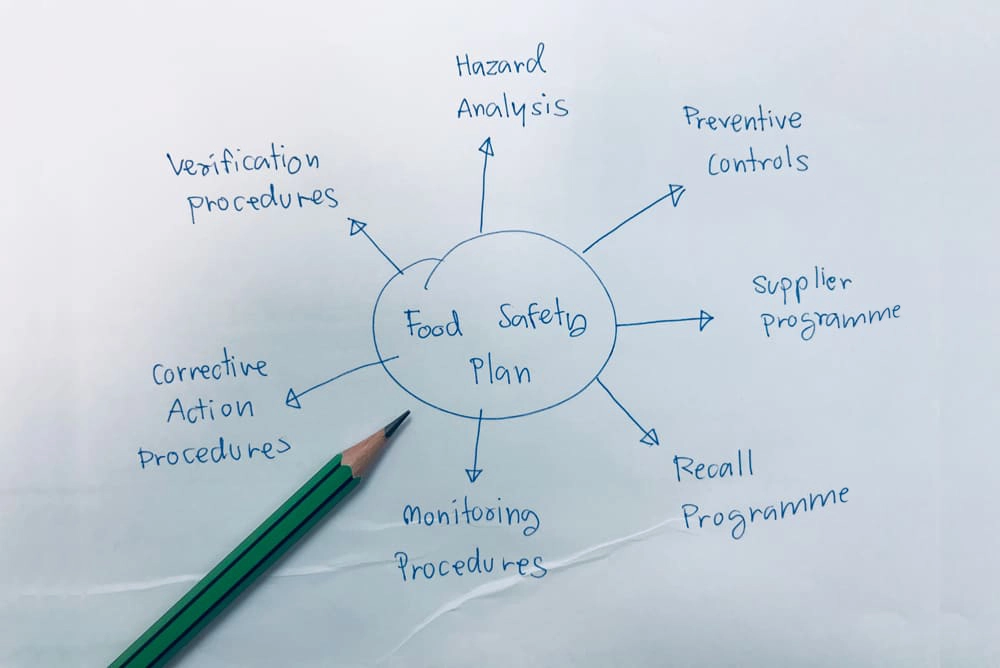
Every November, the International Stress Management Association (ISMA) launches Stress Awareness Week.
For seven days, campaigners shine a spotlight on stress and how it’s harming our health. They also provide resources to help us find our way back from the heightened state many of us live in.
This year, the Health and Safety Executive has joined ISMA to raise awareness of work-related stress with its Working Minds campaign. In support of Stress Awareness Week 2024, we’ve produced this guide to outline what employers must do to prevent stress and why they should start today.
Key Takeaways
- International Stress Awareness Week is an annual event run by the International Stress Management Association.
- International Stress Awareness Week 2024 runs from November 4th to 8th, with its main event, Stress Awareness Day, on Wednesday, November 6th.
- Work-related stress is a health hazard that employers have a legal duty to manage, as with any other workplace risk.
- The Health and Safety Executive’s Working Minds campaign encourages employers to take proactive steps to reduce stress at work.
- Addressing work-related stress benefits businesses by boosting productivity, reducing absenteeism and improving employee loyalty.
Stress Management Training
Our Stress Management Training course explains the key aspects of how stress can affect individuals in an office environment and provides practical advice for managing it in healthy and safe ways to control the problem before it gets worse.
Stress Awareness Week: Working Minds
Whether it’s tight deadlines, long hours or round-the-clock availability, work is often a primary source of stress.
Work-related stress isn’t a problem when it’s temporary. In fact, stress has been shown to be a powerful motivator in the right amounts. But too often, stress and work are indivisible. It’s at this point it starts to affect your health.
Chronic (i.e. constant) stress can cause a range of symptoms, changing the way we think, act and feel. The most common symptoms include:
- Difficulty concentrating or making decisions
- Constant worrying
- Headaches
- Muscle tension
- Stomach pain
- Mood swings
- Avoiding colleagues, friends and family
- Taking time off work
- Turning to unhealthy coping mechanisms like alcohol or drugs
Workers experiencing these symptoms can’t do their best at work, but stress hurts more than our productivity. Over time, people living with stress often suffer from more serious mental health conditions, such as depression. Physical health is also affected, with high blood pressure and heart disease closely linked to chronic stress.
Simply put, stress is a health hazard. And like any other health hazard, it must be controlled in the workplace.
But some employers either aren’t aware of their duty to protect staff from work-related stress or aren’t convinced it should be a priority. The Health and Safety Executive (HSE) is challenging these perceptions with its Working Minds campaign.

Why You Should Make Work-Related Stress a Priority
As the HSE points out, there are three sound arguments for preventing work-related stress.
1. It’s a Legal Duty
Employers are legally required to protect employees from work-related stress. This duty comes from the Health and Safety at Work Act 1974 (HSWA).
Under the HSWA, you must take steps to protect the health, safety and welfare of your employees. There’s no division between physical and mental health; if something can harm your employees at work, it needs to be managed. This process starts with a risk assessment, which we’ll come to later.
2. It’s Good for Employees
Work-related stress doesn’t stay at work; it sticks with people. It makes it harder to relax, enjoy time off or relate to friends and family. In turn, this makes it harder to cope with stress, drawing out or worsening its effects. Eventually, people will reach a physical and mental breaking point.
Nobody should have to sacrifice their health for a job. As an employer, you have a moral duty to ensure the work you assign doesn’t cause harm.
3. It’s Good for Business
Prioritising health and safety isn’t free, but it is an investment. Putting money into your employees’ welfare will see long-term financial benefits.
Happy employees are more productive and less likely to take time off. (Close to half of all work-related ill health is due to stress, with the average employee experiencing it needing 15.8 days off annually.)
Employees who feel supported are also more loyal, which reduces staff turnover. When you do need to hire, a workplace culture that values wellbeing will attract the best candidates (and improve your public image).
Preventing Work-Related Stress
Mental health is personal, and we all respond to stress differently. But stress is typically a systemic issue. If one worker is stressed because of their role or the way they’re managed, others will likely be, too. You can root out these deep-seated issues with an organisational risk assessment.
Organisational risk assessments identify risks to everyone, which can be more effective in terms of cost and impact. This Stress Awareness Week, the HSE is recommending a slightly altered version of the typical five-step risk assessment process to find and fix stressors in your workplace. We’ve summarised each step below.
1. Reach Out
Reach out and talk to your workers about what’s stressing them out. You can’t just imagine what they’re dealing with. Ask questions to learn what problems your workers are actually facing and how they can be dealt with.
Conversations like these also signal that you care about mental health, which increases buy-in and encourages workers to be honest.
2. Recognise
Look for signs of stress at work. The HSE offers more guidance on recognising when teams or workers are under too much pressure, but key ones to look out for are:
- Frequent arguments and grievances
- Increased absences
- Decreased performance
If you notice these warning signs, consider whether work is the cause. Most work-related stress is related to these six main areas:
- Unrealistic demands
- Lack of control over work
- Lack of support
- Unhealthy relationships with colleagues
- Unclear role and responsibilities
- Sudden changes
3. Respond
If you identify stress as a problem and can link it to work conditions, you have to respond. Collaborate with your workers to find solutions. You might need to adjust workloads or offer additional training and support, for example.
Be sure to follow up on every issue. Workers will lose trust in the process (and you) if you don’t take steps to tackle every source of stress.
4. Reflect
After you’ve made adjustments, reflect on their impact. Are workers less stressed? Is more needed? A risk assessment isn’t a one-off. Review it regularly to ensure the measures you’ve implemented are working, and no new risks have surfaced.
5. Routine
To make any lasting improvements, mental health needs to be a routine topic of discussion. Check in with employees regularly, and don’t leave it until the next Stress Awareness Week.

Stress Management Training
Stress can’t just be a priority for one week. Understanding and managing workplace stress is essential to maintaining a healthy, productive environment.
Our online Stress Management Training course provides practical tools to help you and your employees recognise, reduce and respond to work-related stress.
Investing in training is a step towards a healthier, more resilient workplace. Equip your team with the skills they need to manage stress now so they won’t be feeling the pressure next Stress Awareness Week.





















